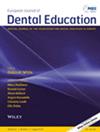A Typology of Empathic Communication Strategies in Dental Visits
Abstract
Introduction
Dentists' empathy for patients is associated with enhanced patient satisfaction and clinical outcomes, and with reduced patient anxiety and dentist burnout. Cognitive empathy has been distinguished from emotional empathy, but how these broad types are expressed within the dentist-patient relationship has not been explored. The purpose of this study is to further differentiate types of empathy expressions in routine dental visits.
Materials and Methods
Third-year students (n = 80) treated standardised patients (n = 11) portraying one of two patient profiles, each of which had multiple treatment needs in addition to a major systemic health problem: cancer or rheumatoid arthritis. After each visit, the patients completed assessment rubrics which included opportunities to comment on performance on four skillsets: visit initiation, patient interviewing, treatment planning and global communication. These comments were qualitatively content analysed. Comments (n = 301) were first deductively coded for valence (positive vs. negative evaluation) and empathy type (cognitive vs. emotional). Subsequently, comments were inductively coded for subtypes.
Results
Three subtypes of cognitive empathy were identified in patient comments: facilitating comprehension, resolving treatment barriers and relieving physical discomfort. Five types of emotional empathy were identified: comforting emotionally, validating, sympathising, encouraging and inspiring confidence. Unexpectedly, four subtypes emerged which could not definitively be classified as exclusively cognitive or emotional, so a hybrid type was identified for these subtypes: respecting, moderating, attending and destigmatizing.
Conclusion
Patients distinguish subtypes of cognitive and emotional empathy, but some hybrid expressions are powerful because they simultaneously convey both types of empathy.

 求助内容:
求助内容: 应助结果提醒方式:
应助结果提醒方式:


